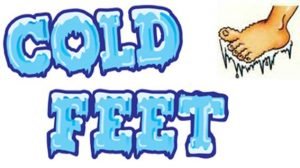
It’s easy to forget about your feet when they’re covered by socks and shoes over the winter. Yet, foot problems and injuries are common during the colder months. Issues such as cracked heels, frostbite, athlete’s foot and even foot injurie can threaten your foot health as well as your overall well-being.
You can minimize your risk of foot problems by taking the right cold-weather precautions.
Read on to learn our recommendations for keeping your feet healthy during the winter months.
Keep your feet clean
Thoroughly washing your feet when you bathe or shower can help you prevent toenail fungus, ingrown toenails, and athlete’s foot. Since these types of foot fungus thrive in dark, moist, and warm environments, it’s important to follow cleansing with fully drying your feet before you put on a fresh pair of socks.
While most people associate foot fungus with public showers or pools, you can pick them up virtually anywhere if you come in contact with an infected surface. You’ll reduce the likelihood of catching these infections by avoiding walking barefoot, even at home. It’s impossible to know where fungi exist and whether you’re picking them on your feet as you walk.
Moisturize your skin
Dry winter air and indoor heating combine to create cracked skin on your feet and heels. Heel fissures, the cracks that develop from severe dry skin, can cause pain and bleed if they become extreme. Deep fissures also allow easy access for fungi and bacterial infections to enter your foot.
You can prevent and treat dry skin by applying a quality moisturizing foot cream after you bathe. However, it’s important to avoid putting too much cream between your toes because the moisture can remain there and lead to infection.
Use proper socks and footwear
The right winter socks insulate and protect your feet. Breathable fabrics, like wool, and moisture-wicking synthetics can reduce sweating, which contributes to freezing. If you notice very pale feet and wrinkled toes when you take off your socks, your socks likely allow too much moisture to accumulate. Look for socks that keep you both warm and dry.
Shoes and boots should also work to maintain foot health. If you’re skiing or participating in other winter activities, ensure that you’re using appropriate, well-fitting footwear. Padding in shoes and boots should be adequate to protect you without constricting circulation in your feet and toes. Reduced circulation in your feet can make them feel cold or even numb.
Remove wet socks and shoes quickly
Snow, ice, and rain can make it difficult to avoid wet shoes when you’re venturing outside in the winter. The unavoidable dampness can lead to bacterial and fungal infections as well as an offensive odor.
It’s important to let your boots dry out before reusing them. You can expedite the process by removing the liner and allowing it to dry separately. Turn the boot upside down to allow the toe box to dry out and reduce the likelihood of an infection developing there.
Prevent fractures
Snow and ice also increase your risk of foot fractures during winter months. Wearing boots or waterproof shoes can keep you safe when there’s the possibility of walking on slippery surfaces. You can also reduce your chance of falling by applying traction devices underneath your shoes.
Participating in skiing, snowboarding, or skating also makes you more susceptible to foot injuries. Know your abilities and enjoy these activities safely within your limitations. Proper training beforehand can also reduce your risk of injuries.
Find out more about keeping your feet healthy during the winter season call us today.
#stepandstridepodiatry #respod
0800 473 776
(09) 212 9612
